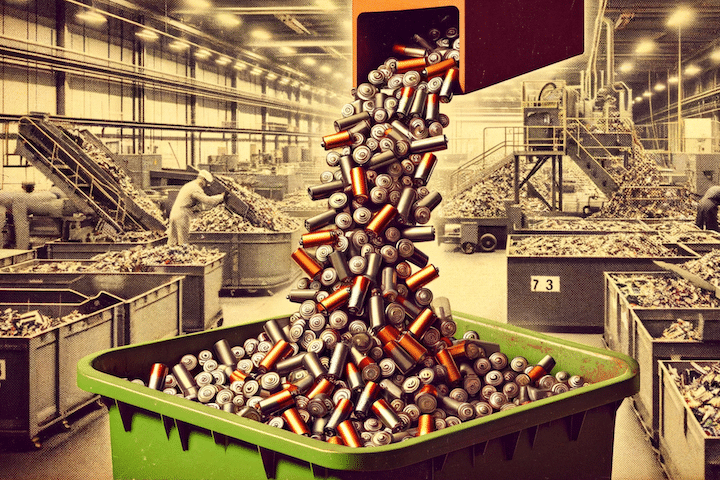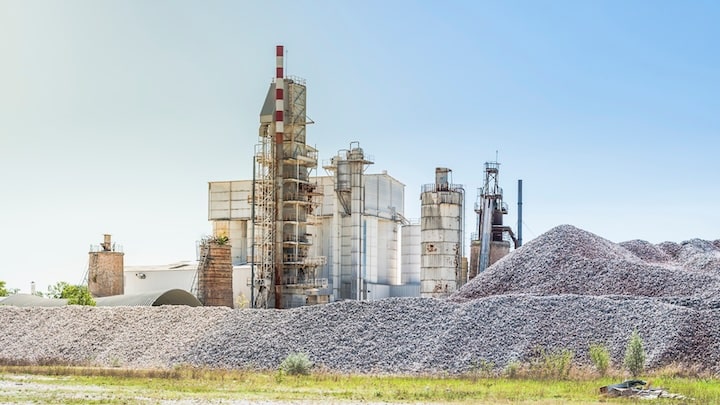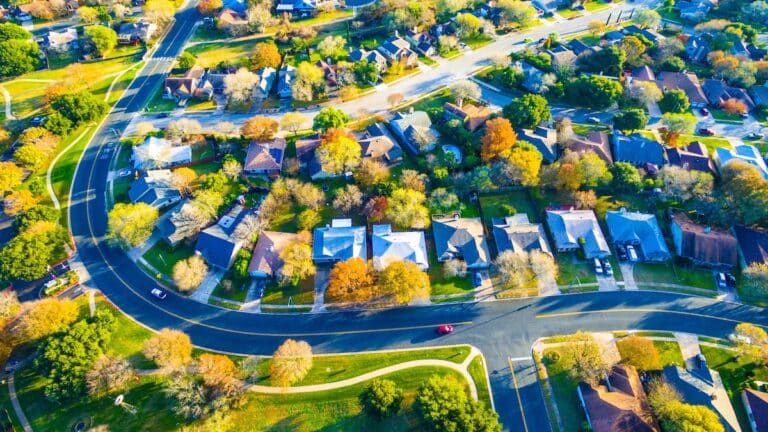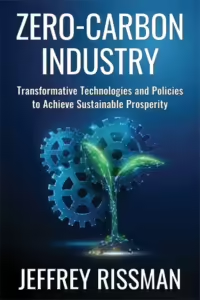“Cooking with Gas” music video: [00:00:01] Gas. Cooking with gas, cooking with gas. We all cook better when we’re cooking with gas. Gas is so hot. It’s not only when it’s off, it’s the only way to cook. That’s what I was taught. [00:00:14][12.5]
Melissa Lott: [00:00:14] If you’re not already familiar with this eighties hit single Cooking with Gas. Well, let me be the one to introduce you to it. This might be, in my opinion, one of the greatest music videos ever made. [00:00:25][10.8]
“Cooking with Gas” music video: [00:00:25] To go back. Here’s a fact You should have known a past nine out of ten chefs only cook with gas. Why is that? You said, Can I cook my way? The benefits would have to a really make your day. So lesson class because we’re going to go back here are the reasons you should cook with gas. [00:00:41][15.3]
Melissa Lott: [00:00:41] I cook with gas because So you can find this video on YouTube. But let me just paint the picture. I’m talking mullets, chef’s hats. It’s this corny eighties music video with all these kids dressed up dancing around the gas stove. And if you’re confused at this point, I know I was at first. Well, here’s some background. The song was written in 1988 by the National Fuel Gas Distribution Corporation. It’s an energy company. And they were trying to promote people using gas. And so they wrote this entire rap song to talk about the benefits of, you know, cooking with gas. I cook with gas because broiling so clean, the flame consumes the smoke increasing. Know what I mean? And when I bake a pie to put on the fill, my self-cleaning oven takes care of any spill. Cooking with gas. Cooking with gas. [00:01:24][42.9]
“Cooking with Gas” music video: [00:01:25] We are cooked better when we’re cooking with gas. [00:01:27][2.0]
Melissa Lott: [00:01:28] The thing is, the gas industry is still making this kind of promotional gas content to this day. In 2020, Rebecca Leber for Mother Jones reported on this phenomenon of gas influencers. These are Instagram influencers who are paid by the American Gas Association to promote natural gas Stovetops and they use the hashtag wait for it cooking with gas. And if you’re wondering why the gas industry, of all things is hiring Instagram influencers, it’s because it’s part of a decades long marketing campaign. The gas industry has been trying to outcompete other alternatives, like electric stoves for a long time. And recently, gas stoves have been at the center of a lot of controversy. I mean, first off, when you compare them to electric stoves, natural gas, it’s just not that great for you. Even having them in your house is associated with an increased risk of asthma. And they also emit methane, a greenhouse gas, even when they’re not in use. And slowly we’re seeing cities starting to say, well, let’s just get rid of them. I follow energy news pretty closely, and I work with some cities on their energy policy. And I can remember the headlines coming out as city after city started to ban gas, particularly starting back in 2019. [00:02:38][70.0]
“Cooking with Gas” music video: [00:02:40] The fight against climate change is coming to a building near you. [00:02:43][3.1]
Melissa Lott: [00:02:43] Today, the city council voted to ban natural gas from all new construction and require electrical instead. We saw 50 cities in California ban natural gas in new buildings, starting with Berkeley. And then we saw the New York City Council vote to ban natural gas in new buildings in 2021. That was a really big deal. And we know that this battle over natural gas stoves, it’s also a battle over the future of our buildings. When are we going to decarbonize them and how will we decarbonize them? And it’s taking place in this kind of wonky, hyper technical area of city and state politics. I’m talking building codes. Most of us think that building codes are these things that make sure that our houses and apartments don’t just collapse over our heads, which they are, but they’re actually really, really important from a climate perspective. They’re a set of rules that can dictate everything from energy efficiency to the type of fuel your stove runs on. And this week, we’re going to talk about how these rules might be a secret weapon to tackling carbon emissions from buildings. So this is the big switch. A show about how to rebuild the energy systems that are all around us. I’m Dr. Melissa Lott and I’m the director of research at Columbia University’s Center on Global Energy Policy. [00:03:56][73.0]
Melissa Lott: [00:04:02] So to understand more about what role these codes might play in decarbonizing our buildings, I called up someone who knows a lot about them. [00:04:09][7.5]
Michael Gerard: [00:04:10] So building codes are a set of binding rules that govern how you build buildings, and they tend to have an enormous level of detail about the technical specifications of all aspects of buildings. [00:04:23][12.8]
Melissa Lott: [00:04:23] This is Michael Gerard. He’s a professor of environmental law, climate change law and energy regulation at the Saban Center here at Columbia University, where I work. So I want to start at a really basic place. So for our listeners who just might not be familiar with building codes, what are they and who makes those rules? [00:04:43][19.8]
Michael Gerard: [00:04:44] They’re typically set by the state. Some places a city can set its own building codes, but it’s typically a body within the the state government that sets the building code. [00:04:56][12.0]
Melissa Lott: [00:04:57] But states don’t usually set their codes from scratch. They’ll start with a draft. And those drafts usually come from this organization that sets model building codes for the whole country. Think of it like a cookie cutter building code and the organization that makes that cookie cutter. It’s called the International Code Council. [00:05:13][16.5]
Michael Gerard: [00:05:14] The ICC, the International Code Council drafts model building codes that most states start with. The ICC itself is full of technical people, but it’s actually dominated by the real estate and building industry. And there’s been some controversy about that. Then when it gets to assess the state level in a state agency, again, it’s likely to be career civil servants who have expertise in buildings, who are going to be the ones who play a major role in tweaking the the building codes to adjust it to the state. [00:05:52][38.1]
Melissa Lott: [00:05:53] The people determining all of these important rules for how our buildings are set up, that this mix of experts and civil servants and people from the real estate industry and for the most part, the building codes they write don’t make headlines unless there’s a huge change. [00:06:07][14.0]
Michael Gerard: [00:06:08] And you get a big hot political issue like a ban on natural gas and you have broader participation. But for most of the technical issues, it’s a very wonky process. [00:06:20][12.5]
Melissa Lott: [00:06:25] And when it comes to decarbonizing buildings, what role can these building codes play in either speeding up and encouraging decarbonization or slowing it down? Like, how do we use these codes to actually help us go faster? [00:06:35][10.1]
Michael Gerard: [00:06:35] The building codes can, in first place, specify the degree of insulation that’s required in the building. So what is the energy efficiency of the building? It can specify the kind of heating and cooling equipment that is allowable. It can specify the nature of the electrical connections. Just a whole lot of really dated, gritty detail that goes into it. So in decarbonizing buildings, of course, the key factors are are the the insulation, the heating system, the nature of the air conditioning system, all of that. And all of those can be specified in building codes. [00:07:16][40.9]
Melissa Lott: [00:07:17] So I’m going to give you a magic wand. You ready for it? Okay. So if you had a magic wand and you could change the building codes across the country to decarbonize buildings to get us to net zero buildings as quickly as possible, what are the things you would change? And I’m going to say let’s focus on your top three. So what are those top three things that you would change? [00:07:35][17.9]
Michael Gerard: [00:07:36] First, I would require all new buildings to have electric heating and cooling. Secondly, to the extent that it would possibly work there, I would require the heating to come from heat pumps. And third, I would require all new buildings to have electric vehicle charging stations. Of course, of having all these electric vehicle charging as you’re greatly increasing the demand for electricity, which also is ineffective, requiring all electric heating buildings. So all of that adds up on a net basis to over time, maybe a doubling of the demand for electricity. And that has major implications, obviously, for our decarbonization effort. The amount of the sheer huge amount of wind and solar and other renewables that we need. [00:08:24][47.9]
Melissa Lott: [00:08:24] Okay. So we electrify heating and cooling. We install heat pumps and we put in charging stations. This sounds pretty good, right? Well, it gets even better because as we’ve talked about before on this show, these changes have benefits for other stuff, too, like health and air pollution and even might help us to better adapt to the impacts of climate change. So when we talk about changing building codes to support decarbonization, there’s a lot of other positive things that it could do. At the same time, we call that co-benefits, and I wonder if you could step me through what the co-benefits are of changing these building codes to support decarbonization. [00:08:58][33.8]
Michael Gerard: [00:09:00] Well, one of the most important things is that it could reduce the levels of conventional air pollution like sulfur dioxide and nitrous oxide in particular matter and so forth, which are generated by burning natural gas or oil and heating buildings or burning natural gas or coal to make electricity. So if we reduce the amount of energy that we need and if that energy would otherwise have to come from fossil fuel sources, either within the building or from the electricity generators, that’s a major co-benefits. Another major co-benefits of efficiency is if you’re using less electricity or less or no natural gas, your your bills to utility bills go down. [00:09:45][45.1]
Melissa Lott: [00:09:45] So related, all these things we’re talking about is this concept of resilience. And we look at buildings being really resilient to the changing climate all around us. Could you talk me through that and how we think about building codes when it comes to resilience? [00:09:58][12.8]
Michael Gerard: [00:09:59] Building codes have an important impact on the way that buildings can survive the flooding and extreme heat and very high winds and other other sorts of conditions that are going to get worse as a result of climate change. So after Hurricane Sandy hit New York City, the city modified its building codes to require that new buildings be a certain elevation above the, you know, the flood zone and that they have waterproofing at certain times. Very importantly, that the mechanical equipment like furnaces be at an upper level so that of the buildings or the lower level floods of that equipment doesn’t flood. There are numerous ways that building codes can affect the vulnerability of buildings to these extreme weather events. And so that’s another area where building codes are really essential. [00:10:54][54.7]
Melissa Lott: [00:10:55] So I know that you wrote a whole book on legal pathways to deep decarbonization. I’m wondering if you have thought about some easy fixes in existing building codes that I know our cities could adopt right now to encourage decarbonization and to speed it up? [00:11:11][15.6]
Michael Gerard: [00:11:11] Well, one thing that New York City has done is to require that whenever you put up a new building or the roof is renovated, that it either be a white roof or a green roof. Or have solar cells. So of course, a green roof is the most expensive, which has, you know, vegetation planted on top and that both cools the building and has a stormwater absorption effect, which is a benefit. A white roof, you can just painted white or put some other white surface on it or solar PV. But that’s something that can readily be done right away. If it’s PVS, it’s generating more electricity for you. If it’s white or green roofs, it’s reducing the heating load within the building and therefore, you know, making the building more energy efficient in that sense. If we’re talking about new buildings, it’s a, you know, very straightforward to require better insulation and other aspects that will improve the the efficiency. The biggest challenge, of course, is existing buildings and and, you know, retrofitting existing buildings to make them more energy efficient is immensely more difficult and expensive than building a new building. [00:12:28][76.9]
Melissa Lott: [00:12:29] Drowning tools that are particularly good at helping us with that problem. I’m trying to think like I’m thinking about existing buildings. I know in Austin they passed a rule that it doesn’t require to do anything except for have an inspection of your house before you sell it. If you are selling it that says, you know, it’s energy efficiency rating, it’s energy rating. [00:12:46][17.2]
Michael Gerard: [00:12:47] Well, in the first place, there are an increasing number of buildings of cities that have the sort of disclosure requirement you’re talking about that require home energy audits to be done or some other way to figure out the energy consumption of the building and then make that information available. So in some places online so that everybody can see it, but at a minimum, make it available to the two potential buyers of the building. In terms of something with a substantive requirement, there are a handful of cities that require for commercial buildings. Whenever a building undergoes a major renovation that it install better, you know, more energy efficient measures. Some other cities limited to publicly owned buildings. The city that has probably gone the furthest is New York City. And in 2009, the city council passed something called the Climate Mobilization Act. And the most important part of it is called local Ward 97 and local law. And these 97 is a substantive requirement that buildings over a certain size greatly reduce the greenhouse gas emissions that are attributable to the building. And they can do that in part by changing out their heating and cooling system and improving their energy efficiency. But they also now have an incentive to buy renewably generated electricity. And this law is leading to a tremendous demand to enter into power purchase agreements with some of the offshore wind farms that are being built off Long Island. New Power line that’s going to carry hydropower from Quebec and other clean sources. [00:14:38][111.2]
Melissa Lott: [00:14:39] Okay, so this all sounds great. Codes can be super important, but not very well known. Tool to supercharging the decarbonization of our buildings. So why haven’t these changes been implemented yet? Well, New York’s Climate Mobilization Act is a pretty good example of the barriers to getting these kinds of codes implemented. [00:14:57][17.3]
Michael Gerard: [00:14:58] This law is very controversial. It’s far too expensive. Elements don’t go into effect until 2030. I think it’s widely expected that the real estate industry may try very hard to lobby the state legislature to overturn the overturn the law. Meanwhile, a lawsuit has just been filed by a bunch of building owners and others to try to challenge the the law. So this is an important substantive law on energy efficiency and buildings and on emissions from buildings. But it is bathed in a great deal of controversy. [00:15:33][35.6]
Melissa Lott: [00:15:34] When we talk about updating building codes, what are the main barriers and challenges? What are the things that are getting in the way of updating those codes in order to support accelerated decarbonization? [00:15:44][9.7]
Michael Gerard: [00:15:46] Well, the chief thing is that it costs a lot of money to comply with stronger building codes. And in the initial element, if we’re talking about new buildings, that is the money that’s being spent by the people who are building the buildings and they may or may not be able to readily pass those costs along to the people who buy the buildings. The real estate brokerage industry, the realtors tend to resist a lot because this will mean that, you know, buildings are more expensive and harder to sell them. So it’s really that we have. Tremendous organized, systematic resistance from the builders. And to a lesser extent, the realtors in making building codes stronger. They have also have a strong influence on the International Code Council, which drafts the model building codes that all states pick up. Some of the most ambitious elements of building codes are also quite expensive to implement. And so they’re pushed to receive pushback from the building industry and the real estate industry. Those industries are heavily represented in the relevant governing bodies within the ICC. And so this resistance from those industries has held back the adoption of some stronger elements of these codes by the ICC. [00:17:10][84.7]
Melissa Lott: [00:17:17] Another important consideration for making big changes to building codes is equity. Making sure that the costs of these changes don’t just get pushed onto low income populations and renters. [00:17:27][10.0]
Michael Gerard: [00:17:28] The question is who’s going to pay for the high cost of retrofitting buildings? And so if you have a building that doesn’t have rent regulation and the landlord passes the cost of all of this trade through to the tenants, that’s a real hardship. And then there are millions of people who are barely scraping by, being able to pay their existing rents. And so if you’re making the rent even more expensive because it has all these energy efficiency costs loaded on to it, that makes it much, much more difficult. And so that’s one reason why government subsidies are so important that if the if ultimately the tenants have to pay for all of this, that’s a real problem for a non-trivial fraction of the population and because of the hardship that that imposes. [00:18:24][55.9]
Melissa Lott: [00:18:25] So when we think about discussions of where building codes could come from, you know, to support decarbonization across the United States, around the world like here in the U.S., have you heard of discussions that talk about one federal set of codes to kind of encourage decarbonization across the country all at once? [00:18:41][15.9]
Michael Gerard: [00:18:42] Yes. In 2009, the House of Representatives barely passed bill by a close vote, passed a bill called the Waxman-Markey bill, which would have imposed a cap and trade requirement on electricity generation and a lot of other industrial activity. That bill also called for a national building code that would have imposed energy efficiency requirements nationwide. The bill was supported by President Obama, but it died in the Senate. But that would have in most people forgotten about this, but it would have imposed a nationwide building code. Since then, there’s been discussion of it in various policy circles, but there hasn’t been serious legislative activity and a uniform national building code. [00:19:25][43.2]
Melissa Lott: [00:19:26] So when you talk about building codes, we talk about what can be done at the federal level in D.C. and also in the States. When we look at what’s happening in D.C. right now, is there anything big that’s been coming through or it’s on the horizon that we should all be paying attention to? [00:19:39][12.7]
Michael Gerard: [00:19:39] Well, in early June, the White House launched a multi agency initiative to modernize building codes at the state and local levels, also at tribal levels, because tribes set their own building codes as well. And the federal government is also requiring the Department of Housing and Urban Development to require federally assisted housing and public housing to have, you know, especially efficient and resilient construction standards for the projects that they help with. You know that when the federal government when the White House announced this, they said that nearly two out of every three US communities have not adopted the latest building codes. The International Code Council periodically updates these codes, but not all cities and towns adopt the codes, and that’s one of the issues that it takes a certain amount of work for a city or a state to modernize its code. And this new federal effort is going to encourage local and state governments to adopt the more model codes. [00:20:48][68.7]
Melissa Lott: [00:20:49] To recap, cities and states across the country regulate buildings through building codes, and these codes can be a secret weapon in transitioning us to net zero buildings by mandating things like heat pumps and electric vehicle hookups and energy efficiency. But so far, progress on creating federally mandated requirements for energy efficiency in building codes is slow. So maybe at this point you’re thinking, Well, where’s the corny eighties music video about decarbonizing buildings? Maybe we could call it cooking with electrons. Well, you’re in luck because Liquid. I found the song for the Electric Future, An ad for electric stoves from Cook Electric. I’m just going to let it play. [00:21:29][39.5]
Cook Electric Advertisement: [00:21:29] Well, hey, good luck in You got to cook in How to cook electricity. [00:21:35][6.4]
Melissa Lott: [00:21:41] And that’s our show. The big switch is produced by Columbia University’s Center on Global Energy Policy, in partnership with Post-Script Media. This episode was produced by Alexandria, Herr and Daniel Waldorf. And Bailey is our editor. Theme music, mixing and scoring were by Sean Marquand and Greg, Bill Frank and a special thanks to our Columbia team Kirstin Smith, Kewley, Liz Smith and Natalie Volk. Our executive editor is Steven Lacy. I’m Dr. Melissa Lott. And this is the big switch. [00:21:41][0.0]
[1246.2]










